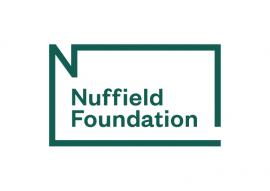Current, Resistance and Electrical Componenents
Collected here are some supporting resources, suggestions and practical ideas to help students develop a fuller understating of electricity and various components.
The triple science content on components tends to work on an assumption that students are clear and confident with current, potential difference and resistance and this may not always be the case. In some cases they can just treat components as ‘black boxes’ that do something but a revisiting of what these three key terms actually mean and how they are related is strongly recommended to provide a richer look at what is actually going on.
Whilst this list provides a source of information and ideas for experimental work, it is important to note that recommendations can date very quickly. Do NOT follow suggestions which conflict with current advice from CLEAPSS, SSERC or recent safety guides. eLibrary users are responsible for ensuring that any activity, including practical work, which they carry out is consistent with current regulations related to Health and Safety and that they carry an appropriate risk assessment. Further information is provided in our Health and Safety guidance
- ALL
- Teacher guidance
- Textbook
- Experiment
Teacher guidance
Episode 109: Electrical Characteristics
This is designed for A level physics students so you'll need to adapt it accordingly to meet the needs of your own specification and the ability of your students. Most teachers won’t want to include the work on the diode but the practical work on the resistor and lamp completed over a lesson or two would show the differences between ohmic and non-ohmic resistors nicely and help students to get a deeper understanding of resistance. Teachers lacking confidence in this area will appreciate the background information from the institute of physics along with the worked answers.
Textbook
Nuffield Science Calculations
Physics requires students to both understand concepts and to carry out calculations and both underpin each other. Carrying out calculations helps students to consolidate their learning and gain deeper insights.
Here are some worked examples and questions on resistance which include the use of V=IR and voltage : current graphs which will save teachers time as they won’t have to write their own.
They are most suitable for higher ability students and teachers may like to talk through the worked examples first on the board before setting the questions. You’ll find this material on pages 32-35 of the book (pages 40-43 of the pdf document) and the answers are on page 127 (pdf page 135)
Experiment
Bright Sparks: Practicals
Choose the Electricity and Heat pdf from this list for an interesting and different introduction to resistance – though in this context you may not want students to work right to the end and investigate how heat is transferred. But it’s a self-contained unit of work, so if time is on your side, you could let your students work their way through the instructions independently and see how far they get. The thin pencil leads suggested here are available fairly cheaply from stationers and the investigation could be extended by comparing them with carbon electrodes or coils of nichrome wire.



